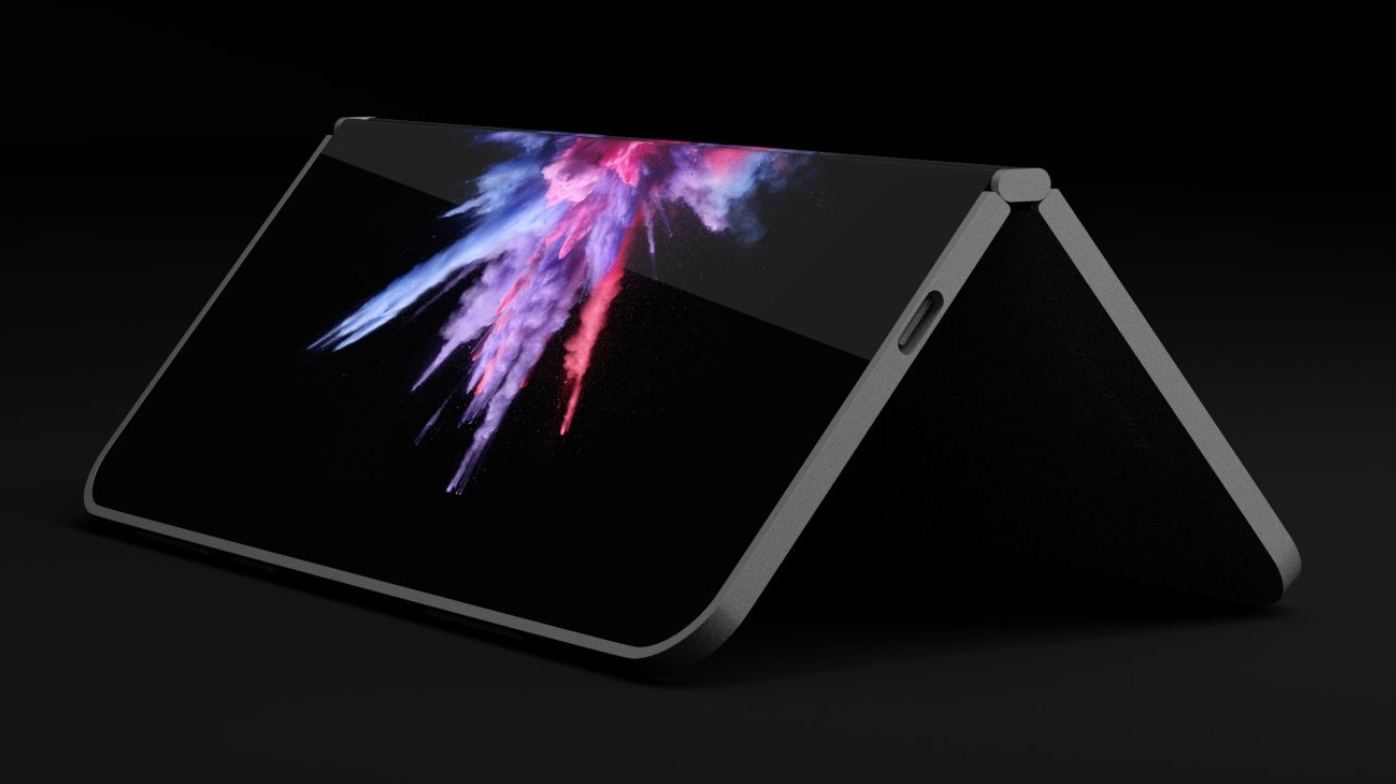Microsoft’s dual-screen Andromeda could quickly adjust its interface using ultrasound tech
Surface Centaurus may also use ultrasound sensors mentioned in a patent

It seems that Microsoft might be planning to use a clever system of ultrasound sensors when it comes to potential dual-screen devices like Andromeda.
That possibility is hinted at by a patent uncovered by Windows Latest, which outlines a foldable device with two separate displays, with one display section having an embedded ultrasound emitter, and the other an ultrasound sensor.
The latter will also host measurement unit and calculation unit components – in other words, hardware gubbins (stop us if we’re getting too technical) to enable calculating the distance between the display portions and the angle the device is open at.

The big idea is that the machine can then adjust the interface of the operating system, or switch into different modes of operation – i.e. tablet mode – depending on how the user has currently positioned the two displays.
The patent also mentions a ‘telephone mode’ which could be used when the displays are in a closed configuration, possibly pointing to the use of this tech in Microsoft’s Andromeda, the alleged “pocketable” dual-screen Surface device which could be a phone-laptop hybrid potentially due to be revealed at some point this year.
Open and shut case
Launching or closing applications is also mentioned as a possible use of this technology, meaning that when the sensors detect the device first being opened, for example, certain apps as specified by the user could be automatically fired up. Or other apps could be automatically opened (or closed) when, say, the device switches into the aforementioned phone mode.
All this needs to be implemented not just with the hardware, but also on a software level, which is why speculation has it that Microsoft is still beavering away with the software side of the equation: Andromeda OS. This is supposedly a modular revamp of Windows 10 which can be altered depending on the hardware it’s running on.
Sign up for breaking news, reviews, opinion, top tech deals, and more.
Everything is pointing to Microsoft looking to make far more flexible computing devices with an OS to match, and this potential application of ultrasound sensors fits into that larger picture quite neatly, enabling a device that can adjust itself on-the-fly depending on the exact configuration of its screens, and what the user is currently doing.
We’ve mentioned the rumored Andromeda hardware, but this could equally apply to Microsoft’s supposed dual-screen slate known by the codename Surface Centaurus. This is apparently a full-size tablet with two screens, sparking déjà vu for those who remember the decade-old Courier, a concept that was evidently well ahead of its time.
As is always the case with patents, though, remember that this concept may never get past the research stage.
If it does, however, we further imagine that the use of ultrasound technology in Microsoft’s hardware could give rise to a new Windows 10 app which is fully integrated with Photos, and allows expectant mothers to get a DIY glimpse of their unborn offspring in the comfort of their own homes. Or maybe not…
- These are the best laptops of 2019
Darren is a freelancer writing news and features for TechRadar (and occasionally T3) across a broad range of computing topics including CPUs, GPUs, various other hardware, VPNs, antivirus and more. He has written about tech for the best part of three decades, and writes books in his spare time (his debut novel - 'I Know What You Did Last Supper' - was published by Hachette UK in 2013).